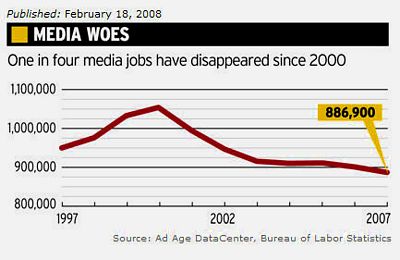 Â
Â
Were the Nickelodeons YouTube 1.0?
Before World War I when newspapers were reaching new readers as rising literacy and the rapid offset press created a mass audience for news, Joseph Medill Patterson co-edited the Chicago Tribune with his cousin, Robert R. McCormick. Patterson, who left Chicago and went “over there” to serve on the front during “the war to end all wars,” returned to the United States to found the New York Daily News which he modeled on London’s tabloid Daily Mirror. Oh for the days when newspapers sparked with sass in contrast to these feeble times when dysfuntional journalism, brain-dead ownership and technological change have transformed print into a toothless lion feared mainly as a potential vector for diseased fleas.
In any event back when newspaper journalism was young, back even before Patterson became an industry muckety-muck, he wrote an article that the Saturday Evening Post published in 1906. Titled “The Nickelodeons” it described the phenomenon then sweeping the nation –  cheap theaters that showed silent films whose sound track was generally supplied by some sort of player piano. Patterson, then 28, was curious about the allure of these literally dumb and often pointless pictures — early nickelodeon “films” might be no more than a fire engine racing to scene. This is priceless journalism that arcs across a century to let us see how this savvy and business-minded man viewed the challenge that moving-pictures posed to print’s hegemony on consciousness. Patterson writes:
“Civilization, all through the history of mankind, has been chiefly the property of the upper classes, but during the past century civilization has been permeating steadily downward.”
Patterson’s prose is a bit florid for modern tastes and the politcally correct will have to get over their bad selves to appreciate his genius. Here is a founder of the “yellow press” — doubtlessly despised by haute culture — as he regards a medium that delivered information without the requirement of literacy. At a time when the U.S. population was roughly 92 million, Patterson wrote:
“Incredible as it may seem, over two million people on average attend the nickelodeons every day of the year, and a third of these are children . . . In cosmopolitan city districts the foreigners attend in larger proportion than the English-speakers. This is doubtless because the foreigners, shut out as they are by their alien tongues from much of the life around them, can yet perfectly understand the pantomime of the moving pictures.”
 The piece offers insights into what we would call the business model of the nickelodeons — for instance they had just 199 seats because theaters of 200 or more had to pay prohibitively-high fees. But I am in a time-crunch today, my internet is down at home and I am at the local coffee shop hurriedly banging out a linkless version of this posting in order to leave you the following thoughts that Patterson pounded into a typewriter 106 years ago:
” Those who are ‘interested in the poor’ are wondering whether the five-cent theatre is a good influence, and asking themselves gravely whether it should be encouraged or checked (with the help of the police).”
But Patterson, whose rambunctious News mocked its pompous New York competitor, the Times, obviously dissents as he concludes the article:
“Whether for weal or woe, humanity has ceasely striven . . . to know more and feel more of both good and evil, to attain a greater degree of self-consciousness . . . In this eternal struggle . . . the moving picture machine, uncouth instrument that it may be, has enlisted itself on especial behalf of the least enlightened, those who are below the reach even of the yellow journals . . . The nickelodeons are merely an extension course in civilization, teaching both its ‘badness’ and its ‘goodness.’Â Â They have come in obedience to the laws of supply and demand.”
(Tomorrow: so what has that got to do with anything?)

 Â
 
 Â Chez Pazienza
 Chez Pazienza